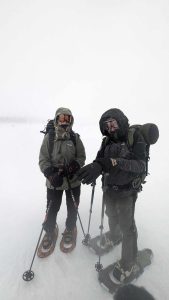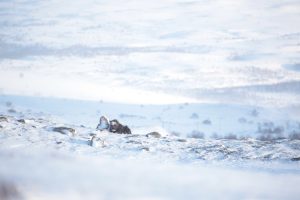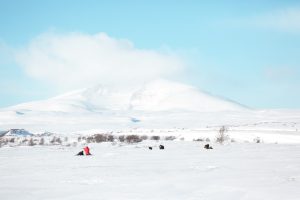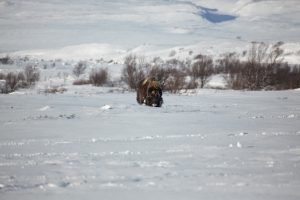Karin is up at Dovrefjell again for a short winter visit to see how photographers hunt for the best shots of the muskox in winter conditions. Conditions are often harsh, with 20 m/s wind and snow on our first day, and -10 and clear sky with slight wind the other. Us humans need put a lot of gear on to deal with the conditions, while the muskox manages well with their thick wool.


Muskox and humans at Dovrefjell. All photos: Karin Lillevold
On the second day we spotted a small calf all alone. It would not make it by itself during winter. We took some pictures of it as it was laying beside a rock, looking quite fragile. It eventually got up to rub itself against the rock before it laid down again. It was very tiny for its age. Our guide notified the rangers about the calf being all alone, and just a few hours later they came and shot it. Each year they have to shoot a certain amount of muskoxen to keep the total number below 200 individuals, which is the amount decided by the county governor. Thus, since this calf would never make it anyway, they might as well shoot this one. It is an example of the collaboration the muskox guides and the rangers have, and also of the brutal reality. As we walked out again, wearing snowshoes and thick clothes, it was rather weird seeing the blood marks on the snow from when the rangers transported the dead calf. Just a few hours earlier we took pictures of it mentioning how cute it looked.
We spotted other muskoxen as well, and there were several photographers there hunting their best shots with their long tele lenses. Muskoxen in front of the famous mountain Snøhetta. It probably could not get any better, I thought. But the photographers complained that the weather was too nice. They wanted to have more wind, and the muskox full of snow. “I need to come back to get the snowface” one of them said, referring to how the muskoxen are often covered in snow in the face during winter. “Muskox weather”, a term they mentioned several times referring to harsh conditions when humans can hardly be out here, would be the best.


